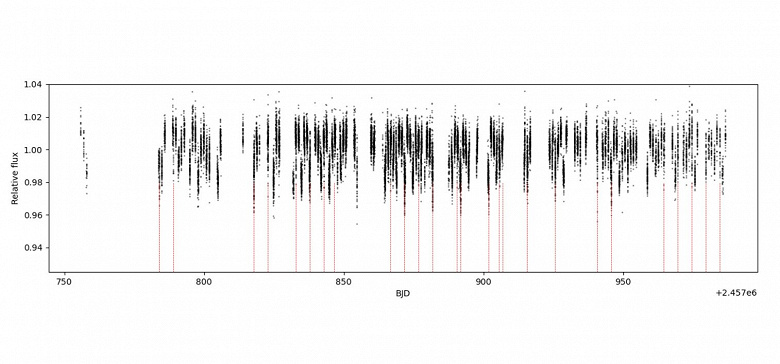The discovery of NGTS-28Ab expands the boundaries of understanding of the “brown dwarf desert”
An international team of astronomers studying data from the Next Generation Transit Survey (NGTS) has found a new brown dwarf. The object, named NGTS-28Ab, orbits its parent star every 30 hours.
Brown dwarfs — These are objects located between planets and stars. They have a mass from 13 to 80 times that of Jupiter and amount to 0.012 — 0.076 solar masses. Although many of these objects have been discovered to date, brown dwarfs orbiting other stars are rare.
Led by Beth A. Henderson of the University of Leicester (UK), astronomers studied the binary system NGTS-28 using data from NGTS and NASA's TESS exoplanet transit satellite. They discovered a rare brown dwarf.
NGTS-28A is the main star of the system. Subsequent observations confirmed that object NGTS-28Ab — it is indeed a brown dwarf. It was also observed by the South African Astronomical Observatory SAAO.
NGTS-28Ab is slightly smaller than Jupiter in size, — 0.95 times the radius of Jupiter, but 69 times more massive. Its density is 98.7 g/cm³. The brown dwarf orbits its parent star at a distance of about 0.02 astronomical units every 30.1 hours. The object's temperature is about 863 Kelvin, and its age is estimated at at least 500 million years.
The main star of the NGTS-28A system has a size and mass approximately half that of the Sun. Its temperature is 3626 Kelvin, and its age is approximately 7 billion years. The second star in the system, NGTS-28B, has a similar temperature but is smaller in size and mass. The system is located approximately 404 light years from Earth.

NGTS-28Ab has one of the shortest periods in the «brown dwarf desert» — this is the name given to a region with an absence of objects orbiting very close to the main stars (within 3 AU). NGTS-28Ab orbits one of the hottest M dwarfs in this desert.
This discovery has great implications for understanding the «desert of brown dwarfs». It was previously thought that the rarity of brown dwarfs was due to an overlap between the mechanisms of planet and star formation. NGTS-28Ab, orbiting one of the hottest M dwarfs, provides new opportunities to study and model these parameters.
Researchers hope that further studies of NGTS-28Ab and other similar objects will help expand knowledge about the formation of brown dwarfs and their role in the evolution of stellar systems. This could have significant implications for our understanding of the processes that lead to the formation of planets and stars.

